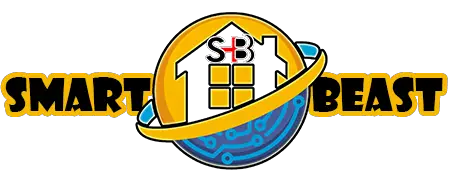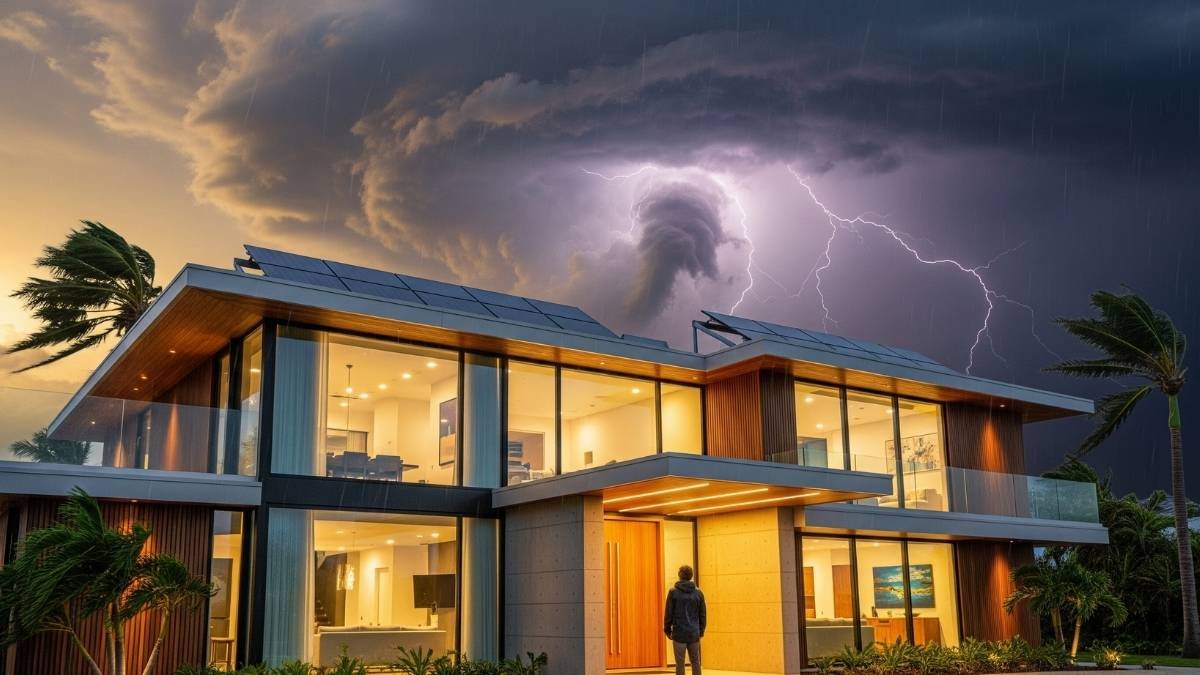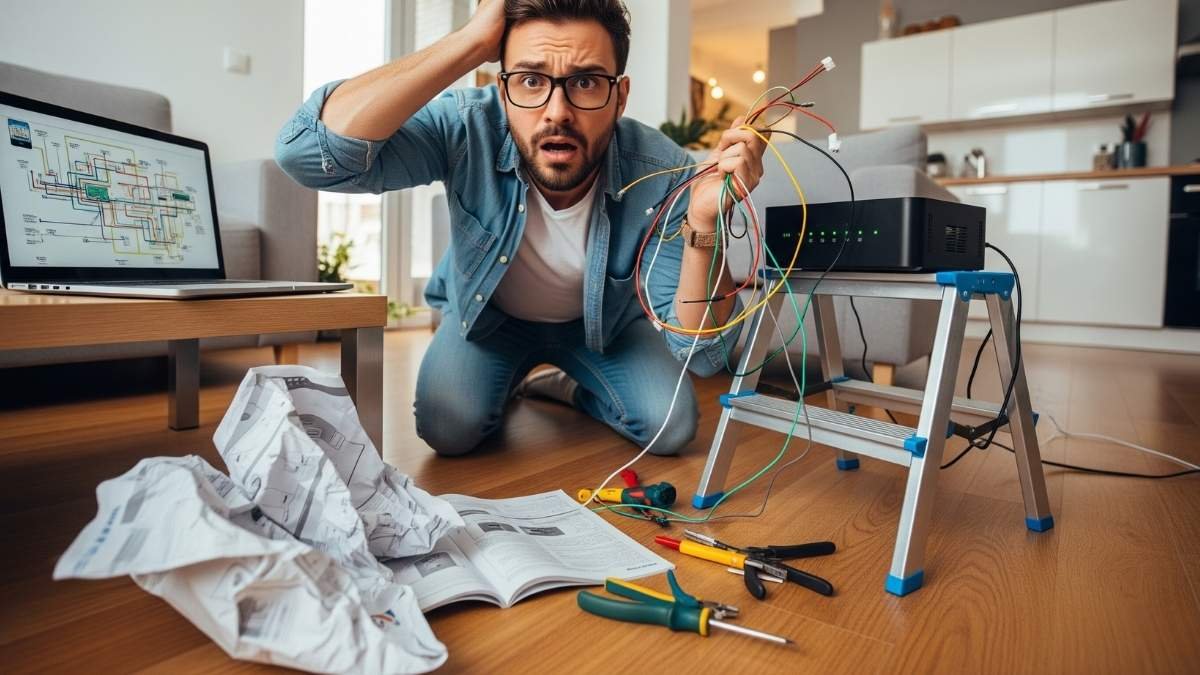
Your neighbor just sold their house for $30,000 more than expected. Same neighborhood, similar square footage, but one key difference – they had the right smart home features.
Meanwhile, down the street, another homeowner is scratching their head, wondering why buyers kept walking away from their “fully automated” smart mansion. Turns out, they installed the wrong kind of smart home system.
Here’s the thing about smart homes in 2025: The market has spoken, and it’s not what most people think.
You’d expect buyers to go crazy for those Hollywood-style homes where you can control everything with your voice, right? Wrong. The reality is way more interesting (and profitable) than that.
The Smart Home Gold Mine Everyone’s Talking About
$150-300 | 24/7 monitoring
$800-1,200 | Cloud storage
$200-400 | Remote access
$20-50/month | 24/7 response
Professional Installation
Insurance Discounts Begin
Full Value Recognition
Maximum ROI Realized
Ready for this? Smart security systems are crushing it in the resale market.
I’m not talking about a single doorbell camera you picked up at Best Buy. I’m talking about integrated security ecosystems – the kind that make your home feel like Fort Knox, but in a good way.
Here’s what’s making buyers lose their minds (in the best way):
The Magic Combo:
- Smart doorbell with two-way audio
- Professional-grade security cameras
- Smart locks you can control remotely
- Professional monitoring that works
And the numbers? They’re insane.
Real estate agents are seeing 4-6% bumps in home values when these systems are properly installed. On a $500,000 house, that’s potentially $20,000-$30,000 in extra value from a $2,000-$3,000 investment.
Let me put that in perspective: That’s like getting a 10x return on your money. Try finding that in the stock market.
Why Security Systems Are the New Granite Countertops

Remember when granite countertops were the must-have feature? Well, smart security is the new granite.
Here’s what’s driving this crazy demand:
Millennials and Gen Z make up 70% of homebuyers right now. These folks grew up with smartphones. They expect to be able to check on their home from anywhere.
But it goes deeper than convenience. Safety isn’t negotiable anymore.
I talked to Sarah, a real estate agent in Austin, and she told me something that stuck: “Buyers aren’t just looking at smart security as a nice-to-have anymore. They’re looking at homes without it and wondering what’s wrong.”
That shift in buyer psychology? It’s everything.
The Energy Efficiency Bonus Round
Want to know what’s running a close second? Smart thermostats and energy management systems.
These babies are adding 2-3% to home values while saving money every month. It’s like the gift that keeps on giving.
The sweet spot seems to be systems that learn your habits and optimize automatically. Buyers love the idea of walking into a home that’s already smart enough to save them money.
The $20,000 Smart Home Disaster You Need to Avoid

Now for the plot twist that’s costing homeowners serious money.
Those fancy whole-home automation systems everyone was obsessing over? They’ve become the smart home equivalent of a boat – expensive to buy, expensive to maintain, and appealing to almost nobody when you’re trying to sell.
I’m talking about those systems where you need a PhD in computer science just to turn on the lights. You know, the ones that cost $30,000+ and require their instruction manual.
Why Buyers Are Running Away From “Smart” Mansions

Here’s the brutal truth: Complex automation systems are scaring buyers away faster than a haunted house.
When potential buyers walk into a home with a Control4 or Crestron system, they’re not thinking “wow, this is amazing.” They’re thinking, “how much is this going to cost me when it breaks?”
The maintenance nightmare is real:
- Service calls cost $200-$500 each time
- Systems become outdated within 2-3 years
- You need special training just to use your own house
- Good luck finding someone to fix it when the original installer moves to Florida
The Depreciation Death Spiral
Remember that $30,000 automation system from 2022? In buyers’ minds, it’s worth about as much as a 2022 laptop – which is to say, not much.
Technology moves fast. Fast.
What seemed cutting-edge three years ago now looks like something from the Stone Age. And buyers know it.
Real estate agents are reporting price reduction requests of $15,000-$20,000 when homes have these complex systems. Buyers want sellers to pay them to deal with the headache.
What Today’s Buyers Want (Hint: It’s Simpler Than You Think)

The 2025 smart home buyer is smart about being smart. They want features that make life easier, not more complicated.
The golden rule? Keep it simple, keep it compatible.
The Magic Three That Always Work
1. Security (we covered this) 2. Climate control that saves money 3. Lighting that doesn’t require an engineering degree
That’s it. Really.
Buyers want to walk in, connect their existing devices, and have everything just work. They don’t want to download seventeen different apps or call a technician every time they want to change the temperature.
The Regional Reality Check

Here’s something interesting: Where you live matters. A lot.
Urban and coastal markets are paying 15-20% premiums for smart features. But in rural areas? Buyers often prefer simpler systems that they can understand and fix themselves.
The sweet spot for maximum impact? Mid-market homes between $300,000-$700,000. These are the properties where smart features can represent 3-5% of the total value – enough to make a real difference.
Your Smart Home Game Plan (The Stuff That Matters)

Thinking about upgrading your home’s IQ? Here’s how to do it without shooting yourself in the foot financially.
Start With the Basics That Work
Smart security first. Always. It’s the highest ROI move you can make.
Then add a smart thermostat. Pick one that works with everything – Nest, Ecobee, something that plays nice with Alexa, Google, and Apple.
Smart lighting comes third. But keep it simple. Nobody needs color-changing mood lighting in every room.
The Compatibility Test

Before you buy anything, ask yourself: “Does this work with the major platforms?”
If it only works with one ecosystem, walk away. Buyers want flexibility, not vendor lock-in.
The magic words to look for:
- Matter/Thread compatible
- Works with Alexa, Google, and Apple
- Doesn’t require proprietary hubs
Installation Matters More Than You Think
DIY smart home projects are killing resale values.
I know, I know – you’re handy. You can figure it out. But buyers and appraisers don’t care about your YouTube University degree.
Professional installation = credibility = higher value.
It’s that simple.
The Future-Proof Strategy
Home carbon footprint monitoring
Air quality & wellness integration
Home energy storage systems
Maintenance & optimization automation
Want to know what’s coming next? Energy management is about to explode.
With utility costs going crazy and everyone thinking about sustainability, smart energy systems are becoming the next must-have feature.
Solar integration, whole-home energy monitoring, smart EV charging – these aren’t luxury features anymore. They’re becoming expectations.
The Voice Control Baseline

Here’s something that might surprise you: Voice control isn’t special anymore.
It’s like having indoor plumbing. Buyers expect it to work, but they don’t get excited about it.
Your smart home features should work with voice assistants, but that’s just the entry fee. The real value is in the practical benefits.
The Bottom Line: Smart Choices for Smart Homeowners

The 2025 smart home market has one clear message: Practical beats flashy every single time.
The winners: Homeowners who focus on security, energy efficiency, and simple automation that makes life better.
The losers: Anyone who thought buyers wanted to live in a spaceship.
If you’re planning smart home upgrades, remember this: Your future buyer wants a home that’s smarter, not more complicated.
Install a killer security system, add a smart thermostat that saves money, and keep everything else simple and compatible.
Do that, and you’ll be the neighbor everyone’s jealous of when it’s time to sell.
Your move: Start with security, keep it simple, and always think about the person who’ll buy your house someday. They’ll thank you for it – with a higher offer.
What smart home features are you considering? Have you had experience with buyers loving or hating certain tech in your home? The comments are open – let’s talk about what’s really working in today’s market.






